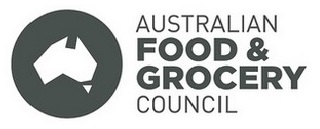
ECRA has developed a suite of measures and metrics from which retailer and supplier trading partners can identify those which are most valid and appropriate for their particular situation, considering the data granularity available to them.
Each loss prevention project has different dynamics and characteristics meaning that there is not a ‘one size fits all’ measure for loss. However it intuitively makes sense that trading partners agree and align on loss measurement going into projects so that a shared perspective of the ‘before and after’ pictures can be established.
To assist, the ECRA Loss Prevention Group, consisting retailers and suppliers, has provided the following information:
- A suite of Loss Prevention Measures
- A tool for calculating results for each of the measures
- An overarching set of considerations to be used for reference
- Advice and a retailer specific matrix regarding the key aspect of known and unknown loss
Loss Prevention Measures
The below suite of measures developed by ECRA can be applied at either SKU or category level. ECRA has also developed a Loss Prevention Calculator Tool (in Excel) which can be used for each of these measures (provided below).
- Loss Reduction – Dollars Value
- Loss Reduction – Dollars Percentage
- Loss Reduction – Units Volume
- Loss Reduction – Units Percentage
- Sales Increase – Dollars Percentage
- Sales Increase – Units Percentage
- Loss to Scan Sales Ratio – Units Percentage
- Loss to Scan Sales Ratio – Dollars Percentage
- Loss to Store issues Ratio – Units Percentage
- Loss to Store issues Ratio – Dollars Percentage
Loss Prevention Calculator Tool
Use ECRA's Loss Prevention Calculator Tool created in Microsoft Excel to help you measure loss in the above categories.
Overarching Considerations
The measures and their metrics should not be looked at in isolation. There are several overarching considerations which project partners should take into account when identifying how they will measure loss and the impacts of efforts to address loss.
ECRA recommend that project partners take these considerations into account to help identify similarities, differences and levels of consistency in the scope of their projects. Project partners are then encouraged to agree upon and utilise appropriate measures and metrics from the suite provided.
Aspect
|
Considerations
|
- Geographic / regional impacts
|
Grouping of stores by region and undertaking comparison of shrinkage metrics by region/area/post code provides understanding of geographic impacts on shrinkage levels. Assists in consideration of appropriate actions by geography
|
|
|
Clustering of stores by demographic value assists in understanding the levels of shrinkage difference inherent in varying demographics. Assists in consideration of appropriate actions by demography.
|
- Events, Promotions
and Seasonality
|
Measuring on versus off promotion, in versus out of season and for particular events provides insight to the relative levels of shrinkage associated with these variables and assists in action planning.
|
- Supply Chain ‘touch
points’
|
The number of handover points in different supply chains gives rise to varying opportunities for shrinkage.
Supply chain touch points should be a consideration when measuring shrinkage to ensure the level of shrink variance associated with different numbers of handovers is taken into account in any comparisons.
|
|
|
The degree to which shrinkage is known versus unknown should be taken into account. Wherever possible the
aim is to move shrinkage to the known categories through detailed study and analysis. Known shrinkage measures
will be of great value in prioritising loss prevention and in the tactics then employed.
|
|
|
New products have significant shrinkage potential for many reasons (data integrity, popularity and promotion, staff knowledge levels, unrecognised shrinkage risk etc). New products may need to be considered in isolation from
mature products when determining overall shrinkage levels and appropriate responses.
|
- In-store location of the category
|
Identifying differences in where categories are located within the store should be part of shrinkage measurement considerations to determine if stores are ‘like for like’. Busier locations and locations tended to by staff may show different shrink rates to other in-store category locations, even in stores of similar demographic value.
|
Known and Unknown Loss Considerations
The ECRA Known vs. Unknown Loss Matrix is a ‘ready reckoner’ that can be used by supplier companies to quickly assess the way in which various retailer trading partners treat different loss types in their businesses. This is a key discussion prior to embarking on loss prevention projects as it identifies the degree to which any available data is attributed to truly known causes of loss.
The ECRA Role Specific Guides (RSGs) to Shrinkage are documents designed to assist both retailer and supplier personnel in the development of their knowledge of the topics of Shrinkage and Loss Prevention – specifically as it relates to their functional role/job.

 Share Article
Share Article 

